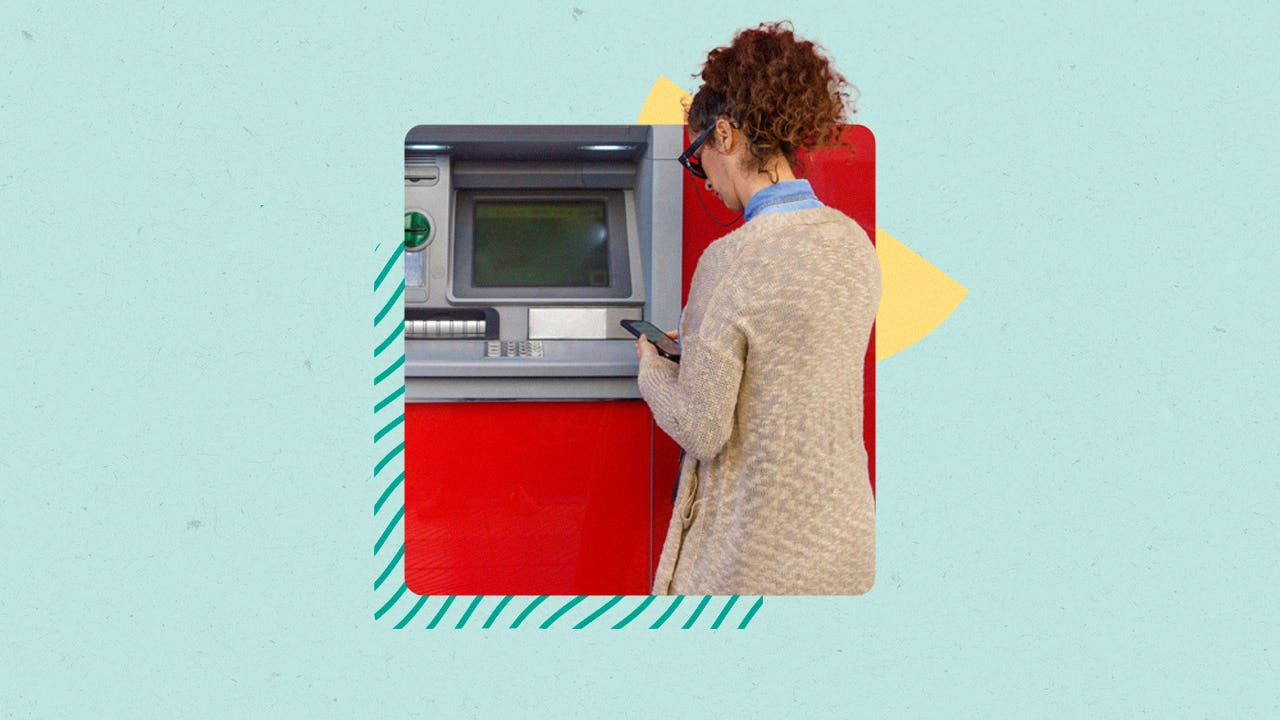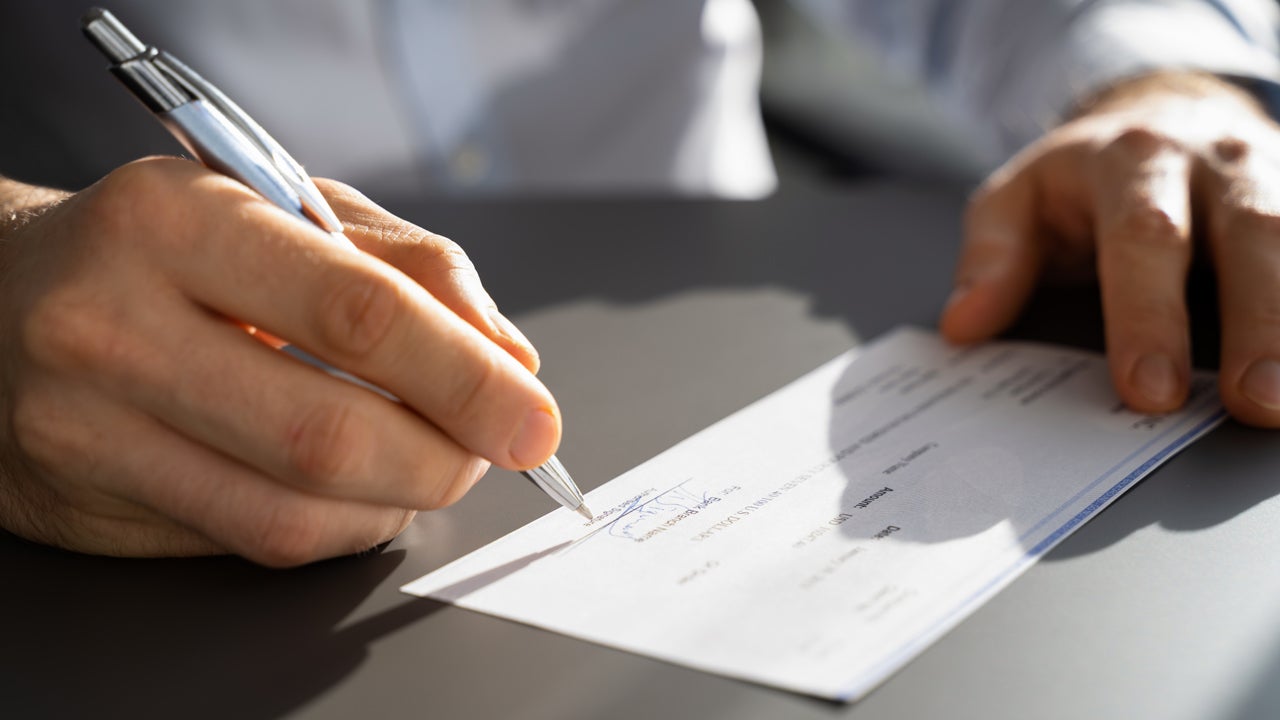13 types of checking accounts

Key takeaways
- Traditional checking accounts offer basic banking features with most charging monthly fees that can be waived.
- Interest-bearing checking accounts help you earn money on your balance, though rates are typically lower than high-yield savings accounts.
- Specialized accounts like student, senior and second-chance checking serve specific customer needs with tailored benefits.
- Premium accounts provide extra perks like free checks and ATM fee reimbursements for customers with higher balances.
Checking accounts are a household money management staple, allowing you to pay bills and make purchases through electronic transfers, paper checks and debit cards. But not all checking accounts work the same way.
The average American keeps their checking account for 19 years, according to Bankrate’s 2025 Checking Fees Survey. That’s why choosing the right type matters — you’ll likely stick with your decision for decades.
The best checking accounts either don’t have monthly fees or allow you to easily avoid these fees by meeting certain requirements. Many of the best checking accounts also have ways to avoid out-of-network ATM fees, or even to get free checks. Here are 13 types of checking accounts and what makes them each unique:
Types of checking accounts
These are some of the most widely available types of checking accounts offered at banks and credit unions.
Traditional checking account
Most banks offer a standard checking account as their basic option. You get paper checks, a debit card and online bill pay. Monthly fees typically range from $5 to $15, though many banks waive the fee if you maintain a minimum balance or set up direct deposit.
These accounts often include overdraft protection, though using it costs around $35 per transaction at most major banks.
- Best for
-
Anyone who needs basic banking features for bill paying and debit card purchases.
- How it compares
-
Traditional accounts offer more features than basic checkless accounts but fewer perks than premium options.
Interest-bearing checking account
These accounts pay you interest on your balance, though the rates vary widely. Some offer competitive rates that rival high-yield savings accounts, while others pay just 0.01% APY.
The catch? Many interest checking accounts only pay higher rates on balances up to a certain limit — often $10,000 to $25,000. Money above that threshold earns much less.
Banks like American Express, Heritage Bank and SoFi offer checking accounts with competitive interest rates.
- Best for
-
People who keep large balances in checking and want to earn something on that money.
- How it compares
-
While these accounts pay interest, you’ll typically earn more in a dedicated savings account for long-term funds.
Premium checking account
Premium accounts bundle perks that you’d normally pay for separately. Expect free checks, free money orders, waived ATM fees nationwide, and sometimes a free safe deposit box. The trade-off? You’ll need to maintain a higher minimum balance — often $5,000 to $25,000.
Banks like Citibank and Wells Fargo market these as “relationship” accounts, offering additional benefits if you hold other products with them.
- Best for
-
Customers with high account balances who use multiple banking services.
- How it compares
-
Premium accounts cost more than basic checking but provide value if you use the included services regularly.
Free checking account
True free checking means no monthly fees, no minimum balance requirements, and no catches. Online banks like Ally Bank excel at offering genuinely free accounts since they have lower overhead costs than traditional banks.
Some big banks also offer free checking, but you might need to meet requirements like setting up direct deposit or maintaining a minimum balance. Check out Bankrate’s picks for best free checking accounts.
- Best for
-
Anyone who wants to avoid banking fees entirely.
- How it compares
-
Free accounts offer basic features without the perks of premium accounts, but they’re ideal for cost-conscious customers.
Student checking account
Banks design these accounts for students ages 16 to 25 (age ranges vary by bank). Student accounts typically waive monthly fees, offer overdraft forgiveness and include perks like ATM fee reimbursements.
Many banks require you to verify your student status and will convert your account to a regular checking account once you graduate or age out. Here are Bankrate’s picks for best student checking accounts.
- Best for
-
High school and college students who need their first checking account.
- How it compares
-
Student accounts offer more forgiveness than regular accounts but fewer features than premium options.
Teen checking account
These accounts let teenagers as young as 13 open a checking account, usually with a parent or guardian as a joint owner. Teen accounts include parental controls, spending alerts, and educational tools.
Some banks go even younger — Capital One accepts customers as young as 8, while Chase allows 6-year-olds to open their First Banking account.
- Best for
-
Teenagers learning to manage money with parental oversight.
- How it compares
-
Teen accounts offer more supervision than student accounts but transition to regular accounts as kids age.
Joint checking account
A joint checking account lets two or more people share ownership and access to the same account. This works well for couples managing household expenses or parents helping adult children with money management.
Keep in mind that any account holder can withdraw all the money or close the account without permission from the others. Here are the best joint checking accounts on the market today.
- Best for
-
Married couples, domestic partners or family members sharing expenses.
- How it compares
-
Joint accounts offer shared access that individual accounts don’t provide, but they require more trust and communication.
Senior checking account
Banks typically offer these accounts to customers 55 or older, though age requirements vary. Senior accounts often include free checks, waived monthly fees, and discounts on other banking services.
However, don’t assume a senior-branded account is your best option. Regular free checking accounts might offer better terms.
Banks like Regions Bank, East West Bank and Valley National Bank offer senior-specific checking accounts.
- Best for
-
Older adults who qualify and benefit from the specific perks offered.
- How it compares
-
Senior accounts may offer age-specific perks, but regular free checking often provides better overall value.
Business checking account
Business accounts separate your personal and business finances — a requirement for most business structures. These accounts handle higher transaction volumes and may offer features like payroll processing and merchant services. Here are the best business checking accounts on the market today.
Business checking often charges per-transaction fees once you exceed a monthly limit, typically 100 to 200 transactions.
Online banks like Axos Bank, First Internet Bank and Live Oak Bank offer business checking with competitive terms.
- Best for
-
Business owners who need to separate business and personal finances.
- How it compares
-
Business accounts offer commercial features that personal accounts lack but may charge higher fees.
Checkless checking account
These accounts skip paper checks entirely, focusing on debit card and online transactions. Some checkless accounts avoid overdraft fees by simply declining transactions that would overdraw your account.
Banks like M&T Bank, U.S. Bank and Wells Fargo offer checkless options.
- Best for
-
People who never write checks and prefer digital banking.
- How it compares
-
Checkless accounts offer simplicity but lack the payment flexibility that checks provide.
Rewards checking account
These accounts let you earn cash back or points on debit card purchases, similar to credit card rewards programs. Discover Bank’s Cashback Debit offers 1% cash back on up to $3,000 in monthly purchases.
Watch out for requirements like minimum monthly transactions or balance limits that cap your earning potential.
- Best for
-
Frequent debit card users who can meet the earning requirements.
- How it compares
-
Rewards checking offers earning potential that regular accounts don’t, but rewards credit cards typically provide better returns.
Private banking checking account
Private banking accounts require substantial deposits — often $100,000 or more across all your accounts with the bank. In return, you get perks like higher daily ATM withdrawal limits, free wire transfers, and a dedicated banker.
- Best for
-
High-net-worth individuals who need premium banking services.
- How it compares
-
Private accounts offer concierge-level service but require much higher balances than other account types.
Second-chance checking account
These accounts help people who’ve been denied regular checking due to past banking problems like excessive overdrafts or unpaid negative balances. Second-chance accounts typically charge mandatory monthly fees and may not offer overdraft protection. Learn more about how these accounts work here.
Washington Federal Bank and Wells Fargo offer second-chance banking programs. Most banks will let you upgrade to a regular account after 6-12 months of good standing.
- Best for
-
People rebuilding their banking history after past problems.
- How it compares
-
Second-chance accounts offer a fresh start but with fewer features and higher costs than regular checking.
How to choose the right checking account
As you compare different checking accounts, ask yourself these key questions to pick the best fit for your finances.
Is there a minimum balance or direct deposit requirement? Some banks will dangle the appeal of no fees in exchange for meeting a certain minimum balance requirement or arranging a minimum amount of direct deposits each month. If you’re worried about being able to hit these benchmarks, you may be better off comparing no-strings-attached free checking accounts.
What do you need in terms of technology? If you’re hoping to use some of the latest and greatest digital features, take a look at the reviews of the bank’s mobile apps to see what other customers are saying about the experience. Some offer robust budgeting tools, mobile check deposit and other tools that will let you do just about all your banking from your smartphone.
How often do you deal with cash? If you regularly withdraw money or make physical cash deposits, you’re going to need to pay extra close attention to the bank’s ATM network and whether it will reimburse any out-of-network ATM fees.
Can you score a sign-up bonus? A lot of banks will offer a few hundred bucks for opening a new checking account. Compare different offers to see if you can qualify for $200 or $300 for becoming a new customer.
Will you earn extra perks with the account? While the sign-up bonus offers some instant gratification, make sure you consider the long-term benefits of the account. Does it pay a competitive interest rate? Is there a debit card rewards program? Consumers usually keep their checking accounts for a long time – an average of 19 years, according to Bankrate’s latest Checking Account Survey – so it’s important to consider whether you’ll love the account long after you spend the sign-up bonus cash.
Why should I bank with a Federal Deposit Insurance Corp. (FDIC) bank? Banking with an FDIC-insured bank protects your money in case of a bank failure. But you not only have to bank with an FDIC-insured bank, you also have to make sure your balance is within FDIC limits and guidelines.
Bottom line
The right checking account depends on your banking habits, balance, and priorities. Students benefit from accounts with training wheels, while high-balance customers might prefer premium perks.
Most people do well with either a free checking account or a traditional account with waivable fees. Focus on accounts that fit your lifestyle and help you avoid unnecessary charges.
Ready to find your ideal checking account? Compare the best checking accounts to see current offers and features from top banks.
Why we ask for feedback Your feedback helps us improve our content and services. It takes less than a minute to complete.
Your responses are anonymous and will only be used for improving our website.









